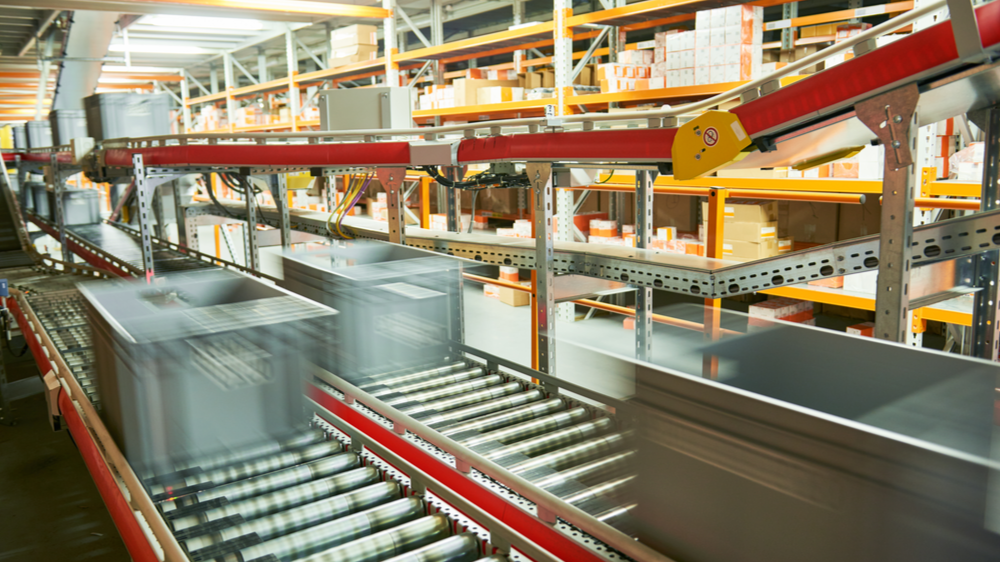

With coronavirus still shadowing everyday life, a great deal of uncertainty hangs over the material handling industry as we move into 2022.
Yet, this has only prompted the industry to make investments required to enable supply chains to adapt to the changes in the market. The next 12 months are expected to be another busy and dynamic period for warehouse operators and their automation partners.
Here are four macro trends that we expect in the coming year.
1. Item picking moves upstream
There has been a general trend toward smaller order sizes in recent years. In 2022, that trend is expected to continue as centralised pallet and case warehouses integrate individual item picking into their operations. This will be driven by the continuing evolution of the retail landscape and the move into direct-to-consumer sales by manufacturers.
On the retail front, stock-keeping unit (SKU) growth and smaller store formats limit shelf space and force retailers to carry less inventory per SKU. Some will be challenged to accept cases of slower-moving products and will have to push for single item replenishment of those products.
Simultaneously, manufacturers recognise the opportunity in e-commerce and will need to support their entry into this market from their centralised warehouses by adding item-handling capabilities to these facilities.
The result will be the transformation of many warehouses as they integrate new processes and technologies to enable efficient item picking. Goods-to-person technologies, such as cube-based automated storage and retrieval systems and mobile autonomous robots, will find a home in warehouses that previously only supported pallet and case handling.
This trend will also accelerate the adoption of robotic item picking systems. This technology offers compelling benefits for material handling operations as it has the potential to fully automate the picking process, helping operators adapt to labour shortages and cost pressures.
Previous generation systems were limited in the range of products they could pick, making them impractical in broad SKU applications. With more advanced gripping and vision systems, newer generation robotic picking solutions expand the range of products that can be picked while also offering the highest operational reliability.
2. Grocery retailers crystallise their micro-fulfilment strategies
Demand for e-grocery services has levelled since the hectic early days of the pandemic, but is still much higher than grocers expected it to be just two years ago. We are also now seeing the same trend in e-grocery as we previously saw in other e-commerce markets: growing consumer expectations for faster order fulfilment.
The value of e-commerce warehouse usage in the Middle East region is expected to increase from $180m in 2018 to $500m in 2024. Investment in warehouses is continuously rising due to the increasing level of automation and supply chain integration.
 Five e-commerce lessons learnt during Covid
Five e-commerce lessons learnt during Covid
The difference is that fulfilment times for online grocery orders are measured in minutes or hours rather than days as in other e-commerce applications. As consumers integrate online grocery shopping into their daily and weekly routines, tolerance for longer fulfilment times has disappeared. More than 40 per cent of respondents in a survey in Saudi Arabia and the UAE said that fast delivery is one of the most important factors influencing their choice of online shopping platform.
This has made in-store and manual fulfilment impractical for large volume retailers in many locations. Picking in-store is inefficient, expensive and creates congestion that can alienate in-store shoppers.
While a few large grocers, such as H-E-B and GIANT, have leapt to automated micro-fulfilment centres (MFCs) and e-fulfilment centres (EFCs) to enable efficient order fulfilment close to customers, the majority of the market used 2021 to gain a better understanding of the complexities of e-grocery fulfilment and begin to implement the organisational changes required to support an MFC strategy in the future.
As a result, 2022 will mark the year when virtually every major grocer finalises its e-grocery strategy, and many will move into the execution phase using MFC automation. At the same time, early adopters will begin to scale their use of MFCs, benefitting from streamlined implementation as solutions that have been refined through pilot programmes are replicated across the distribution network.
3. Supply chain connectivity begins to deliver global inventory visibility
One of the gaps that exists in many supply chains is the inability to gain a comprehensive view of inventory across global distribution and retail locations.
 Transforming Middle East supply chains
Transforming Middle East supply chains
With the digitalisation that has already occurred in warehouses and retail stores, this data is readily available at each site. But creating interfaces across the various software platforms in any given distribution network is challenging for individual organisations. There is a significant market opportunity for software platforms to connect disparate systems across a global enterprise and deliver a consolidated view of inventory and its status.
4. Flexibility drives warehouse automation decisions
The common thread across the first three trends is the need for distribution systems to remain agile and respond to change. The biggest growth driver for warehouse automation technologies worldwide is e-commerce, and the same is true in the Middle East.
The processing of e-commerce is driving the demand for more warehouse space and the increasing adoption of automation solutions in the warehouse itself. A report issued for Materials Handling Middle East by Messe Frankfurt in 2019 estimated that the Middle East warehouse automation market was $500m in 2018 and will grow to $1.6bn by 2025, at a CAGR of 17.5 per cent.
Flexible and scalable robotic automation technology first gained a foothold in e-commerce fulfilment. Those systems enabled e-tailers to adapt to fluctuating demand and rapid growth in ways the traditional automation simply could not. We are now seeing continued expansion of those systems to new applications.
In applications that range from pallet handling to item picking, these solutions give warehouse operators the ability to scale throughput and inventory independently. They are fundamentally capable of driving higher performance with the same inventory or expanding inventory without requiring higher performance.
They also offer the ability to adapt to the shape of the building where they are deployed, supporting the trend of increasing distribution capacity by upgrading older warehouses or repurposing unneeded or underutilised facilities.
Now, as we enter 2022, many organisations will find they simply cannot stretch their available resources and systems any further. New distribution strategies and technologies are required to meet today's challenges and adapt to the unforeseen changes of the future.

You might also like...

Rainmaking in the world economy
19 April 2024

Oman receives Madha industrial city tender prices
19 April 2024

Neom seeks to raise funds in $1.3bn sukuk sale
19 April 2024

Saudi firm advances Neutral Zone real estate plans
19 April 2024
A MEED Subscription...
Subscribe or upgrade your current MEED.com package to support your strategic planning with the MENA region’s best source of business information. Proceed to our online shop below to find out more about the features in each package.






